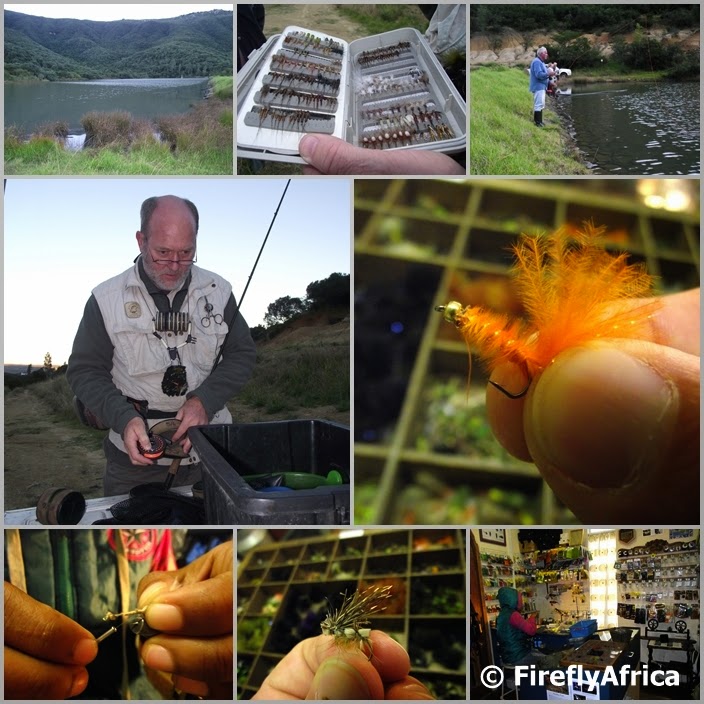Fly fishing – An angling method in which an artificial “fly” is used to catch fish. The fly is cast using a fly rod, reel, and specialized weighted line. Casting a nearly weightless fly or “lure” requires casting techniques significantly different from other forms of casting.
Karoo – The Karoo (from the KhoiSan word which means Place of Thirst) is a semi-desert region of South Africa. The Karoo covers nearly 400 000km2 of South Africa and is mostly defined partly by its topography, partly its geology but, above all, its low rainfall, arid air, cloudless skies, and extremes of heat and cold,
So lets put the two together. Fly fishing in the Karoo. Doesn’t make sense does it? But it does. Alan Hobson of Angler and Antelope Guesthouse in Somerset East runs fly fishing tours doing just that. Fishing in the Karoo. The Karoo isn’t all arid. There are some great rivers and streams flowing through the region and the area around Somerset East has some of the best fly fishing spots in the province. One moment you could be driving through a dry landscape and the next you drop down into a valley with water that could just yield something like this…

I’ve known Alan for a number of years now and by all accounts he must be one of the top fly fishermen in South Africa. I’ve been wanting to go fishing with him for a while now and on a whistle stop visit to Somerset East I got to accompany him to a nearby dam for an hour or so before the light faded and we had to pack up. That hour was more than enough though for him to demonstrate to me how it all works and for me to have a go. When you see somebody fly fishing on television it looks quite easy. You just flick the rod forward and back and wait for the fish to bite…. NOT! Its slightly more complicated. You hold the rod in your one hand and the line in your other. As you flick you let go of the line little by little to let the fly go further and further. Its also not just for flicking. There is a whole scientific technique to it, but after a couple of tries I got it right. Kinda. At one stage I even got a bite as well but it got away. I have to tell you though, it must have been the same size as the one Alan is holding above. That is my story and I’m sticking to it.
Back at the ranch guesthouse, Alan went to show me his fly shop. The fly shop along with the guesthouse’s dining room and Alan’s malt whiskey collection is situated in what used to be a Catholic Church on the premises of the guesthouse. There were flies everywhere and I just couldn’t get enough of looking at the different styles and sizes. I asked Alan how you choose which fly to use and I again found out that science and biology is very much involved in it. If you really know what you are doing you choose your flies according to the conditions and what you see on the water. If you see little insects walking around on the water and there is fish movement around them, you choose a fly that looks like those insects. If there are flying insects, that is what you choose. Hectic! Clearly fly fishing is the total opposite of just sticking a worm on a hook on a line and casting it in just once. I was back in the fly shop the next morning after breakfast to watch Alan’s fly tying assistant at work. Looking at her work I knew Alan had taught her well and even though I only had an hour or so by the water the previous night I knew he had taught me well too. Now to find an excuse to go and spend a full day out on the waters with Alan.

The flies are tiny works of art. All I ever did was make knots.